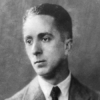Norman Rockwell

Norman Rockwell
Norman Perceval Rockwellwas a 20th-century American author, painter and illustrator. His works enjoy a broad popular appeal in the United States for their reflection of American culture. Rockwell is most famous for the cover illustrations of everyday life he created for The Saturday Evening Post magazine over nearly five decades. Among the best-known of Rockwell's works are the Willie Gillis series, Rosie the Riveter, The Problem We All Live With, Saying Grace, and the Four Freedoms series. He also is...
NationalityAmerican
ProfessionPainter
Date of Birth3 February 1894
CityNew York City, NY
CountryUnited States of America
I work from fatigue to fatigue at my age there's only so much daylight left.
Everyone in those days expected that art students were wild, licentious characters. We didn't know how to be, but we sure were anxious to learn.
I talk as I sketch, too, in order to keep their minds off what I'm doing so I'll get the most natural expression I can from them. Also, the talking helps to size up the subject's personality, so I can figure out better how to portray him.
It wouldn't be right for me to clown around when I'm painting a president.
I can take a lot of pats on the back. I love it when I get admiring letters from people. And, of course, I'd love it if the critics would notice me, too.
Travel is like a tonic to me. It's more than just getting away from the studio for a brief rest. I need it to recharge my batteries.
The remarks about my reaching the age of Social Security and coming to the end of the road, they jolted me. And that was good. Because I sure as hell had no intention of just sitting around for the rest of my life. So I'd whip out the paints and really go to it.
Some people have been kind enough to call me a fine artist. I've always called myself an illustrator. I'm not sure what the difference is. All I know is that whatever type of work I do, I try to give it my very best. Art has been my life.
I keep the pornographic stuff in a bus station locker.
I know of no painless process for giving birth to a picture idea. When I must produce, I retire to a quiet room with a supply of cheap paper and sharp pencils; my brain knows it's going to take a beating.
The Balopticon [a machine that projects photos on canvas to trace the lines] is an evil, inartistic, habit-forming, lazy and vicious machine! It also is a useful, time-saving, practical and helpful one. I use one often-and am thoroughly ashamed of it. I hide it whenever I hear people coming.
When I go to farms or little towns, I am always surprised at the discontent I find. And New York, too often, has looked across the sea toward Europe. And all of us who turn our eyes away from what we have are missing life.
Very interesting for an old duffer like me to try his hand at something new. If I don't do that once in a while, I might just turn into a fossil, you know!
The view of life I communicate in my pictures excludes the sordid and ugly. I paint life as I would like it to be.